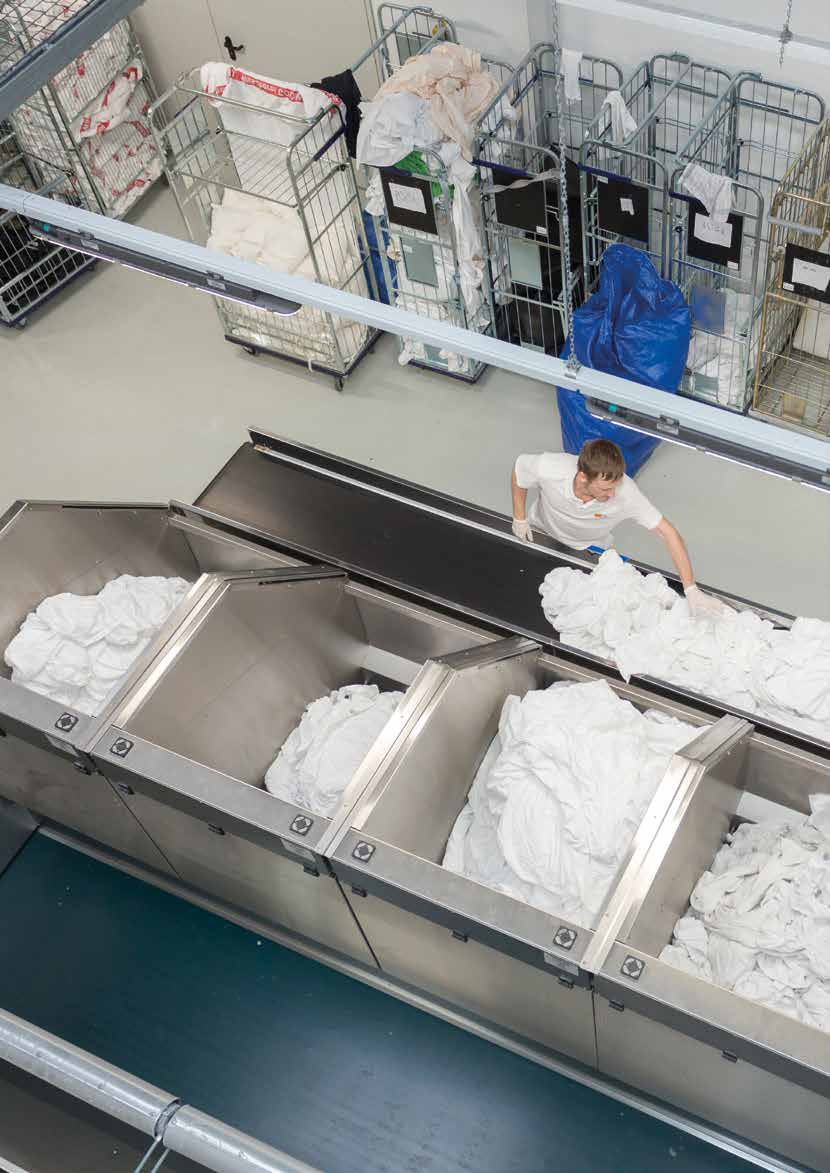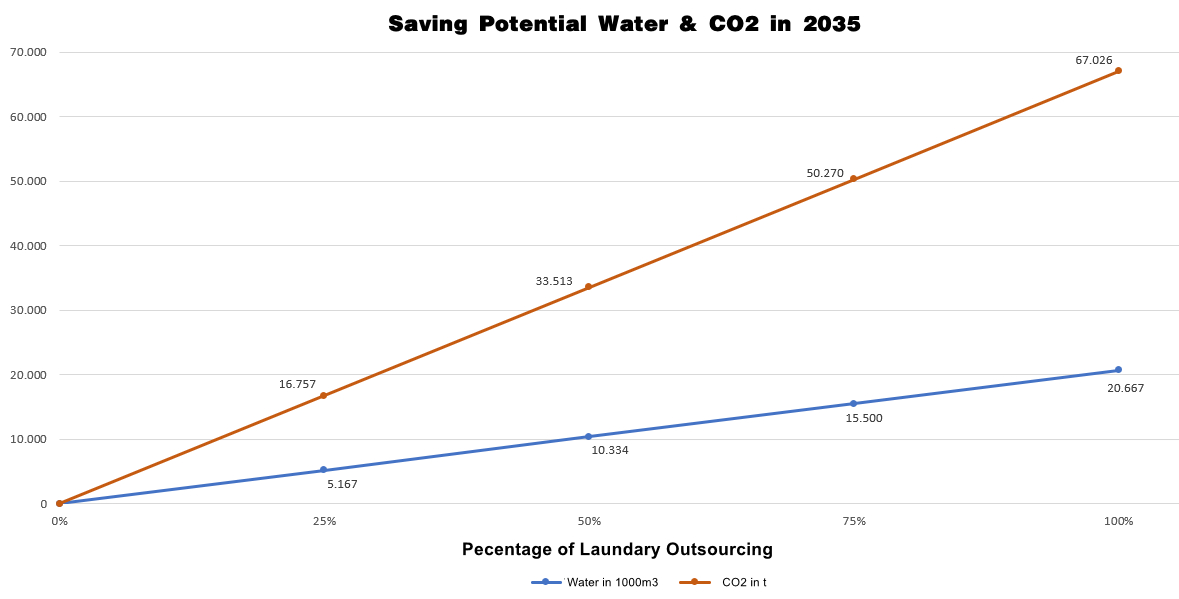
Berlin , March 18th, 2022 – The demand for hospital and care services will continue to rise in the coming years. The strongest increase in demand is to be expected in home care. This offers great potential for supply by professional textile service providers, which has not yet been fully exploited. This supply is not only appropriate for hygienic reasons, but also from a sustainability point of view. Thanks to lower water and CO2 consumption, the ecological footprint is significantly smaller. These are the results of a prognosis by Prof. Frank Schmitz from the University of Health in Bochum, Anne Griese, MA from the Rhein-Waal University of Applied Sciences and Andreas Fastenau from LEO System GmbH.
The majority of hospitals in Germany are already supplied with textiles and work clothing by professional textile service providers. Little is known about this in home care. However, by using existing logistics to the households of people in need of care and by networking those involved, washing in large industrial laundries is possible. Prof. Frank Schmitz from the University of Health in Bochum, Anne Griese from the University of Applied Sciences Rhein-Waal and Andreas Fastenau from LEO System GmbH have examined the development of demand for laundry services in hospitals and care.
Growing market
Against the background of an aging society, the number of people in need of care in Germany will increase. Based on the forecast model of the Deloitte Health Care Indicator, an increase of 28% is assumed. In particular, the need for care in your own home will increase sharply. According to the forecast, the number of people in need of care who are cared for by a nursing service will increase by 33%. In the same period, the number of treatment days in hospitals will increase by 2.8%. However, the number of hospital cases will increase by more than 2.8% per year, as the length of stay will continue to decrease.

Overall, laundry consumption will also increase. Considered for the individual segments, this means on national average: an increase of 2.8% for the supply of hospitals by 2035 and in inpatient care of 3.8%. Significantly higher growth rates are to be expected in the field of outpatient care. Assuming that the laundry consumption in outpatient care per day of care corresponds to that in inpatient care, the forecast assumes a national average increase in demand of 24.5% by 2035.
The development is very heterogeneous both in relation to the different segments and regionally. Regions with a particularly large increase in demand are characterized by population growth and a higher average age in the population.
Lower energy consumption for professional textile service providers

“There is great sustainability potential in using the professional textile service for laundry care in home care,” says Prof. Frank Schmitz. Data collection has shown that the water and energy consumption per kilogram of laundry in industrial laundries is significantly lower than that of household appliances. The study outlines several scenarios for professional textile care in the home care sector. A proportionate centralization of laundry treatment of 25% leads to savings of around 5.17 million m³ of water and 16.76 thousand tons of CO2 in 2035.
Further sustainability potential available

Andreas Schumacher
The study did not consider the sustainability advantage of the textile service beyond the energy savings. According to the authors and the DTV, there is great potential for sustainability in the lifespan of the textiles used. The longer textiles can be used, the fewer new ones have to be produced. This aspect is inherent in the circular business model of the textile service provider. The textiles used there often achieve more than 100 wash cycles. This is usually not achieved by washing your own clothes.
“The prognosis shows that the textile service has answers for many current problems in the area of sustainability. Sustainability in the textile chain must not only be thought of in production or recycling, but must also take the usage cycle into account in particular. Circular economy models like ours can contribute to achieving the climate goals that have been set,” says Andreas Schumacher, Managing Director of the German Textile Cleaning Association.
The full study can be accessed here: https://www.dtvdeutschland.org/healthandcaretextile2035/





